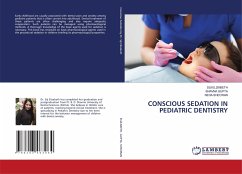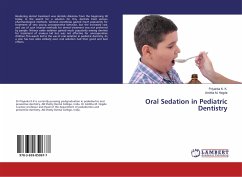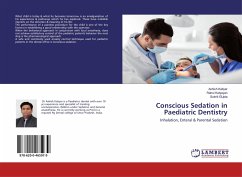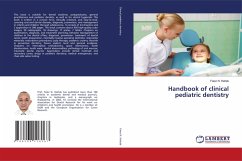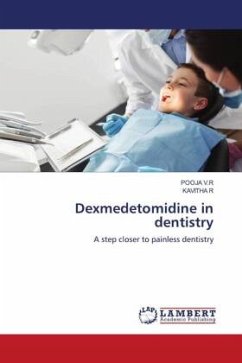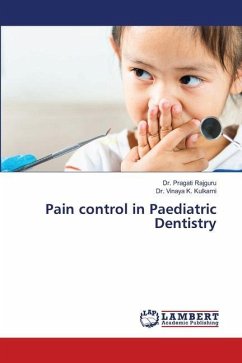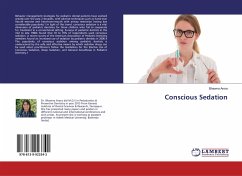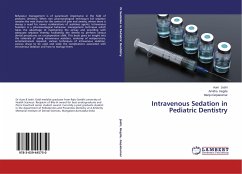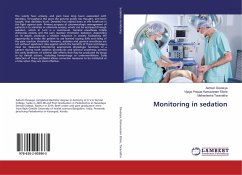
Monitoring in sedation
Versandkostenfrei!
Versandfertig in 6-10 Tagen
33,99 €
inkl. MwSt.

PAYBACK Punkte
17 °P sammeln!
The words fear, anxiety, and pain have long been associated with dentistry. Throughout the years the general public has thought, and been taught, that dentistry hurts. Dentistry has indeed been at the forefront in the fight against pain. Primary purpose of pharmacologic management of patients is to minimize or eliminate anxiety, which can be achieved through sedation, which in turn is a continuum. General anesthesia totally eliminates anxiety and the pain reaction threshold. Sedation, depending on its depth, produces a relative reduction in anxiety facilitating the opportunity to invite the pa...
The words fear, anxiety, and pain have long been associated with dentistry. Throughout the years the general public has thought, and been taught, that dentistry hurts. Dentistry has indeed been at the forefront in the fight against pain. Primary purpose of pharmacologic management of patients is to minimize or eliminate anxiety, which can be achieved through sedation, which in turn is a continuum. General anesthesia totally eliminates anxiety and the pain reaction threshold. Sedation, depending on its depth, produces a relative reduction in anxiety facilitating the opportunity to invite the patient to use learned coping skills and rising of the pain reaction threshold. However, sedation and general anesthesia are not without significant risks against which the benefits of these techniques must be measured. Monitoring appropriate physiologic functions of a patient during both sedative procedures and general anesthesia permits the early detection of adverse side effects that may beproduced by drugs or by clinical actions, including hemorrhage or underventilation. Early detection of these problems allows corrective measures to be instituted at a time when they are most effective.



